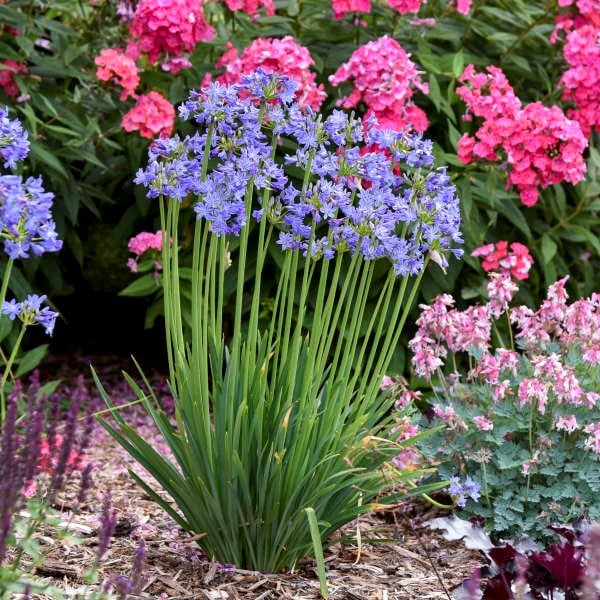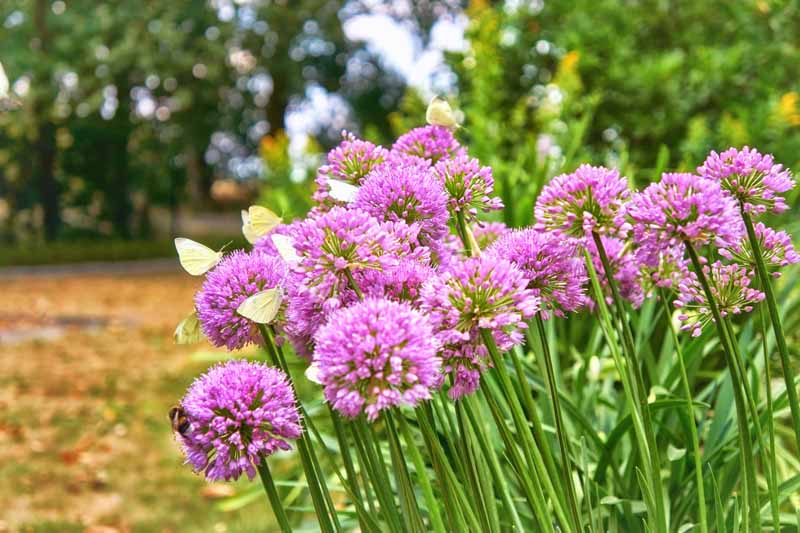Letting Loose the Secret to Successful Agapanthus Growing: Idea for a Flourishing Yard
In the world of gardening, growing agapanthus effectively calls for a tactical method that incorporates numerous aspects of plant treatment. By understanding the subtleties of agapanthus cultivation, one can create an atmosphere where these plants grow and grow abundantly.
Planting Agapanthus: Ideal Practices
When growing Agapanthus, appropriate soil preparation is vital for guaranteeing effective growth and advancement of these gorgeous blossoms. Agapanthus, typically called Lily of the Nile or African lily, prospers in well-draining soil with a slightly acidic to neutral pH degree - Agapanthus. Before planting, it is vital to change hefty clay soils with natural issue such as garden compost or peat moss to boost water drainage and offer important nutrients for the plants
To plant Agapanthus, select a place that obtains full sunshine to partial shade, as this will promote healthy growth and plentiful flowering. Dig an opening twice the diameter of the plant's root ball and position the Agapanthus at the exact same depth it was previously expanding. Carefully backfill the opening with dirt, pushing down securely to eliminate any type of air pockets around the origins.
Water the freshly grown Agapanthus completely and remain to maintain the soil evenly damp, specifically throughout the plant's energetic expanding period. Agapanthus. Applying a balanced plant food once a month can better support the plant's growth and flowering. By adhering to these ideal practices for planting Agapanthus, you can develop a stunning display screen of these captivating blossoms in your garden
Suitable Dirt Conditions for Agapanthus
For optimal development and flowering success of Agapanthus plants, making certain the dirt problems are optimal is important. Agapanthus flourishes in well-draining soil with a slightly acidic to neutral pH degree ranging from 6.0 to 7.0. This kind of soil permits adequate water drain, preventing waterlogging which can cause root rot. To enhance dirt drain, think about adding raw material such as garden compost or peat moss when preparing the planting website. Additionally, Agapanthus favors soil that is abundant in nutrients, so including a well balanced plant food during the growing period can promote healthy development and lively blossoms.

Watering and Feeding Tips
To guarantee healthy growth and vibrant blossoms, correct watering and fertilizing strategies are vital for successful Agapanthus growing. Agapanthus plants benefit from regular watering, especially throughout the growing season.
When it pertains to feeding Agapanthus, a balanced fertilizer with equivalent components nitrogen, phosphorus, and potassium can be used in the springtime to promote healthy growth and flowering. Slow-release fertilizers are excellent for supplying nutrients gradually over an extensive duration. Avoid over-fertilizing, as this can lead to extreme foliage growth at the cost of blooms.
Additionally, incorporating raw material like compost right into the dirt can enhance nutrient levels and enhance soil structure, helping in the general wellness of the Agapanthus plants. By complying with these watering and fertilizing pointers, gardeners can guarantee their Agapanthus plants flourish and produce sensational display screens of flowers.
Pruning and Deadheading Methods
Appropriate trimming and deadheading methods play an important role in maintaining the health and wellness and aesthetics of Agapanthus plants, matching the important methods of watering and fertilizing for successful growing. Trimming Agapanthus includes getting rid of invested flower heads, yellowing or dead fallen leaves, and total shaping of the plant to advertise far better development. Deadheading, the process of getting rid of faded blossoms, not just boosts the plant's look however additionally encourages more blooming.
When deadheading Agapanthus, it is suggested to snip off the flower stem at the base using sharp, clean shears. This process reroutes the plant's energy from seed production back right into root and vegetation development, promoting a healthier and a lot more durable plant. Regular deadheading can prolong the growing period of Agapanthus and stop self-seeding, which can cause congestion.
In regards to pruning, Agapanthus usually gain from a light trim after flowering to clean up the plant and urge fresh development. Reducing the spent blossom stems and getting rid of any kind of damaged or dead foliage assists keep the plant's vigor and overall look. find here Nonetheless, it is vital to stay clear of cutting into the crown of the plant, as this can damage its health.

Protecting Agapanthus From Vermins and Diseases
Implementing effective bug and condition administration strategies is important to securing the health and vitality of Agapanthus plants in farming. Agapanthus are normally sturdy plants, however they can still come down with numerous pests and illness if not appropriately looked after. One usual pest that impacts Agapanthus is the Agapanthus borer, a caterpillar that passages right into the plant, causing damage to the blossoms and leaves. To stop problems, regular evaluation of the plants is important. If borers are detected, they can be by hand eliminated, or insecticidal soap can be utilized as a control step.
In enhancement to bugs, Agapanthus are prone to conditions such as root rot and fungal fallen leave areas. These problems can typically be prevented by ensuring correct water drainage and avoiding overwatering. Affected parts of the plant must be promptly eliminated to prevent additional spread if indicators of disease show up. Fungicides might also be utilized as a treatment procedure, following the supplier's directions very carefully. By staying vigilant and attending to pest and disease problems promptly, gardeners can help their Agapanthus grow and prosper.

Verdict
Finally, effective cultivation of agapanthus needs correct planting strategies, excellent soil problems, ample watering and fertilizing, regular trimming and deadheading, and protection from illness and parasites. By adhering to these techniques and suggestions, garden enthusiasts can make certain a flourishing garden filled up with stunning agapanthus blooms. Agapanthus. Remember to preserve regular care and focus to detail to promote the wellness and durability of these magnificent plants
When growing Agapanthus, correct soil preparation is important for guaranteeing successful development and development of these gorgeous blossoms.Water the newly planted Agapanthus completely and proceed to maintain the soil equally damp, specifically throughout the right here plant's active expanding season.For optimum development and blooming success of Agapanthus plants, ensuring the dirt conditions are optimal is important. When hair transplanting or growing Agapanthus, make certain the soil is well-prepared to offer the necessary structure for the plants to establish themselves effectively. One usual pest that influences Agapanthus is the Agapanthus borer, a caterpillar that passages into the plant, triggering damage to visit this site right here the blossoms and fallen leaves.